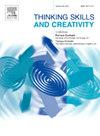Is video modeling with small group instruction effective? Teaching the skills of using waste materials to individuals with multiple disabilities
IF 3.7
2区 教育学
Q1 Social Sciences
引用次数: 0
Abstract
Leisure time skills play a crucial role in enhancing the quality of life, social participation, and independence of individuals with multiple disabilities, as they provide meaningful engagement and opportunities for self-expression While some previous studies have focused on teaching leisure skills using video prompting, limited research has explored the use of video modeling combined with waste materials in a small group format. In line with this, this study aims to teach individuals with multiple disabilities the skills of using waste materials using a video modeling with small group instruction. The study involved three participants (ages 11–14) with intellectual disabilities, cerebral palsy, and various health conditions (e.g., epilepsy, etc.). A multiple-probe design across behaviors was used to evaluate video modeling intervention effectiveness. The video modeling sessions were conducted in a small group format, consisting of three students and one practitioner. The effectiveness of the intervention was assessed using visual analysis for PND and an online tool for the statistical analysis of Tau-U effect size. The findings indicated that implementing video modeling in a small group format was effective in teaching the participants of this study how to make a caterpillar from an egg carton, a butterfly using a paper roll, and a tree using pencil scraps. Furthermore, the participants maintained the skills they acquired for 1, 3, and 4 weeks post-intervention and successfully generalized them to different environments and individuals. However, the study is limited by its small number of participants and relatively short follow-up period, necessitating further research to explore long-term effects and broader applicability.
视频建模与小组教学是否有效?向有多重残疾的人士传授使用废物的技巧
休闲时间技能在提高多重残疾个体的生活质量、社会参与和独立性方面发挥着至关重要的作用,因为它们提供了有意义的参与和自我表达的机会。虽然以前的一些研究侧重于使用视频提示来教授休闲技能,但有限的研究探索了将视频建模与小群体形式的废物材料相结合的方法。基于此,本研究旨在通过视频建模和小组教学的方式,对多重残疾个体进行废弃物利用技能的教学。该研究涉及三名参与者(11-14岁),他们有智力障碍、脑瘫和各种健康状况(如癫痫等)。采用跨行为的多探针设计来评估视频建模干预效果。视频建模课程以小组形式进行,由三名学生和一名从业者组成。采用PND的可视化分析和Tau-U效应量统计分析在线工具评估干预措施的有效性。研究结果表明,以小组形式实施视频建模,可以有效地教会本研究的参与者如何用蛋盒制作毛毛虫,用纸卷制作蝴蝶,用铅笔屑制作树。此外,参与者在干预后的1,3,4周内保持了他们获得的技能,并成功地将其推广到不同的环境和个体。然而,本研究受限于参与人数少,随访时间较短,需要进一步研究以探索长期效果和更广泛的适用性。
本文章由计算机程序翻译,如有差异,请以英文原文为准。
求助全文
约1分钟内获得全文
求助全文
来源期刊

Thinking Skills and Creativity
EDUCATION & EDUCATIONAL RESEARCH-
CiteScore
6.40
自引率
16.20%
发文量
172
审稿时长
76 days
期刊介绍:
Thinking Skills and Creativity is a new journal providing a peer-reviewed forum for communication and debate for the community of researchers interested in teaching for thinking and creativity. Papers may represent a variety of theoretical perspectives and methodological approaches and may relate to any age level in a diversity of settings: formal and informal, education and work-based.
 求助内容:
求助内容: 应助结果提醒方式:
应助结果提醒方式:


